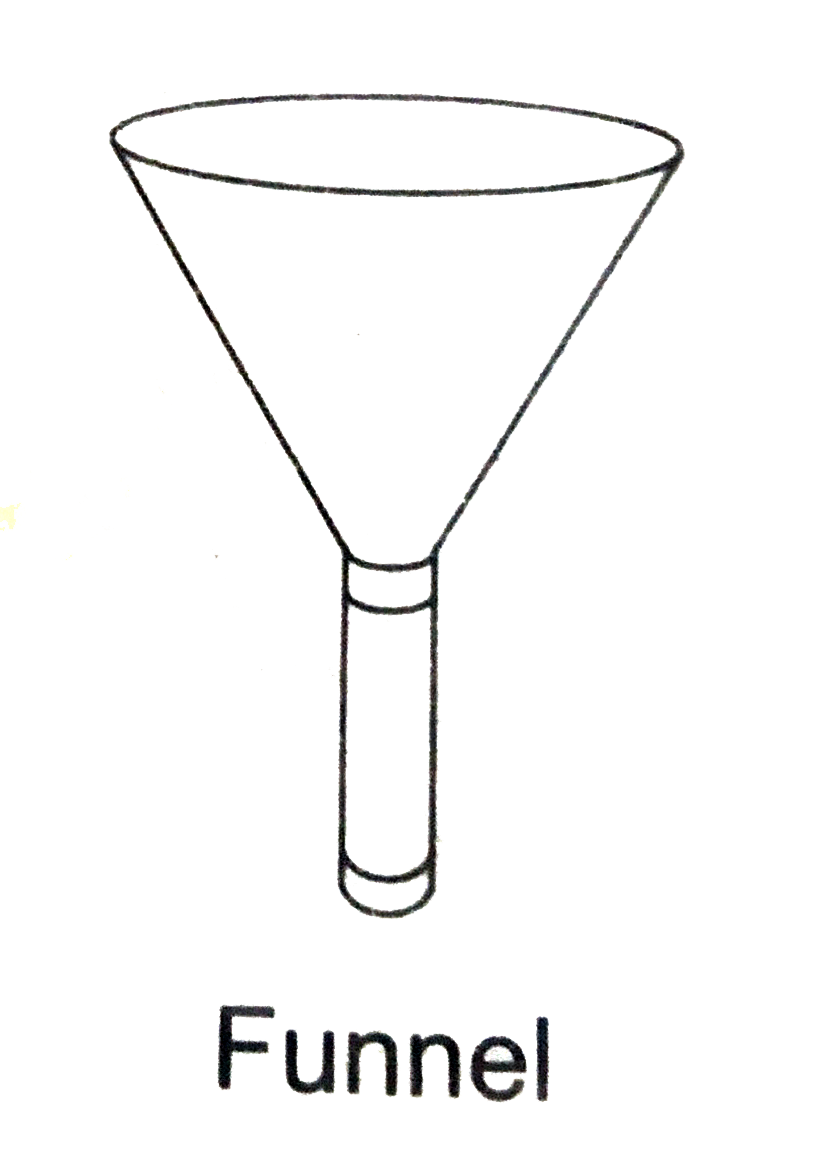A funnel is the combination of

a cylinder and a cone
a cylinder and a hemisphere
a cylinder and frustum of a cone
a cone and a hemisphere
The correct Answer is:C
Step by step video & image solution for A funnel is the combination of by Maths experts to help you in doubts & scoring excellent marks in Class 10 exams.
Updated on:21/07/2023Topper's Solved these Questions
Similar Questions
Knowledge Check
The correct combination of different combination of different gases is air is
ANitrogen -21 % , Oxygen -20.95 % and CO2−0.031 %BNitrogen - 45 % ,Oxygen - 34 5 CO2−0.54%CNitrogen - 78 % , Oxygen - 20.95 % and CO2−0.031%DNitrogen - 78 % ,Oxygen - 20.95% and CO2−0.031%The ciliated funnels on the ventral side of the kidney in frog are called
AOstiaBNephrostomesCCorpora adiposaDBidder's organA very small cube of mass 2kg is placed on the surface of a funnel as shown in figure. The funnel is rotating about its vertical axis of symmetry with angular velocity ω. The wall of funnel makes an angle 37∘ with horizontal. The distance of cube from the axis of rotation is 20 cm and friction coefficient is μ (Take g=10m/s2)

The friction force acting between the block and surface (if μ=0.3) of funnel at ω=5rad/s is :A6.6 NB4 NC2.2 NDzero
A very small cube of mass m is placed on the inside of a conial funnelof semivertical angle (π/2−θ). The funnel is then set in rotation. If the coefficient of static friction between the cube and the funnel is μ and the centre of the cube is at a distancer from the axis of rotation, what are the largest and smallest angular velocities with which the funnel can be rotated so that the block will not move with respect to the funnel ?
View SolutionWhat geometrical shapes is a “FUNNEL” combination of?

View SolutionAn oil funnel of tin sheet consists of a cylindrical portion 10 cm long attached to a frustum of a cone. If the total height be 22 cm, diameter of the cylindrical portion be 8 cm and the diameter of the top of the funnel be 18 cm, find the area of the tin required to make the funnel.
View SolutionA very small cube of mass 2kg is placed on the surface of a funnel as shown in figure. The funnel is rotating about its vertical axis of symmetry with angular velocity ω. The wall of funnel makes an angle 37∘ with horizontal. The distance of cube from the axis of rotation is 20 cm and friction coefficient is μ (Take g=10m/s2)

The maximum value of angular velocity for which no relative slipping occur and also direction of frictional force is : (take μ=2/3)
View SolutionA very small cube of mass 2kg is placed on the surface of a funnel as shown in figure. The funnel is rotating about its vertical axis of symmetry with angular velocity ω. The wall of funnel makes an angle 37∘ with horizontal. The distance of cube from the axis of rotation is 20 cm and friction coefficient is μ (Take g=10m/s2)

For what value of ω, there would be no frictional force acting between the surfaces :
View Solution
